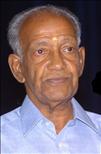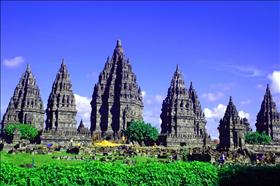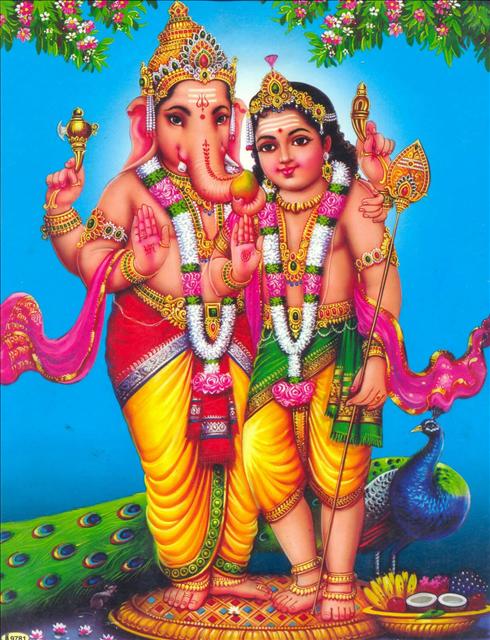 The south of Bay of Bengal in the Indian Ocean has more than 40,000 Tamils, the second largest ethnic group in the region.
The south of Bay of Bengal in the Indian Ocean has more than 40,000 Tamils, the second largest ethnic group in the region.
Indonesia had 50,000 Tamilians at a point of time, brought by the Dutch colonial masters in the 1830s to work in their plantations.
They were used as hard labour and as the conditions were not conducive, many returned home in the 1940s. About 10,000 Tamilians remained in Northern Sumatra, a majority of who were Hindus. This ethnic group also accounted for Christians and Muslims.
In Singapore, with a population of 200,000, Tamilians constitute the third main cultural group. About 18,000 children learn Tamil from primary to the Pre-University level. Numerous Temples are spread over in this small and diverse immigrant city-state and cultural activities take place with the involvement of other ethnicities. The Tamil community is fortunate, as it is rich in knowledge, technology, culture and creativity.
Indentured labour
 Malaysia has more than a million Tamilians, with the first settlement occurring in 1901, when it was called the ’Federated Malay States’ (FMS).
Malaysia has more than a million Tamilians, with the first settlement occurring in 1901, when it was called the ’Federated Malay States’ (FMS).
Tamil workers were employed initially in the rubber plantations but later became traders and other professionals. Many of them were employed by the Government (Railways and Public Works).
The first Tamil school was established in 1876 and by 1925, the number of schools rose to 235 and by 1999, the country accounts for 548 Tamil schools.
The Chettiar community from Chettinadu were there mainly as moneylenders and wholesalers.
Myanmar (Burma) accounted for 200,000 Tamilians in the early 1900s but their number decreased after World War II. The affluence of the Tamil community could be gauged by the existence of the ‘Dandayuthapani (Subramaniam) Temples’ in 32 towns, 50 Tamil primary schools, and circulation of two Tamil newspapers ‘Rasika Ranjani’ and ‘Thondan,’ both banned in 1966.
The University of Culture in Yangon (Rangoon) is promoting Tamil culture.
Nattukottai Chettiars were the main exporters.
Vietnam has about 3000 Tamils mostly in Ho Chi Minh City, which also has a Dandayuthapani temple.
Thailand accounts for about 10,000 Tamils, while their population is less significant in China (5000) and Cambodia (1000).
The African Connection
A majority of Tamilians in Mauritius (115,000) belong to Tamil Nadu, with their arrival dating back to 1727. They were mainly employed in the sugarcane plantations. According to ‘The Commission of Enquiry (1845),’ they were “the best workers.”
Learning Tamil
 In 1847, a Tamil syllabus, with an emphasis on Tamil Grammar was introduced to the education system.
In 1847, a Tamil syllabus, with an emphasis on Tamil Grammar was introduced to the education system.
The country has more than 250 temples, a majority of them with Subramaniam as the Deity.
Mahatma Gandhi, during his visit in 1901, congratulated Tamilians who fought for justice. Tamils can boast of its leaders who made it to the national scene. They include Ranganathan Sreenivasan (Member, Legislative Council), A V Chettiar (Vice-President) and Arumoogam Parasuramen (Education Minister).
Reunion is an Indian Ocean Island, run as a French Department.
Tamil settlements started in 1848 as indentured labour, mainly from Pondicherry and Karaikal, which were French territories in South India.
There are about 120,000 Tamilians, with Tamil as an optional language for children. Worship of Lord Muruga, the ‘Kavadi Festival’ and walking on fire are widespread traditional links. Adherence to these practices of religion and culture has kept Tamilians strong and united.
A ship carrying migrants, with just five Tamilians arrived in Seychelles in 1770 from Mauritius and Reunion. Tamil traders from Pondicherry used to visit for timber trade, followed by settlements from Tamil Nadu.
The country today accounts for 4000 Tamilians. The Seychelles Hindu Kovil Sangam and the first and only ‘Navasakthi Vinayagar Temple’ consolidated the Tamil population, encouraging cultural and religious links.
The annual Kavadi Festival is a major event.
Almost all festivals popular in Tamil Nadu, including Pongal, Thai Poosam, Tamil New Year Day, Vinayaka Chaturthi, Kavadi, Navaratri and Deepavali are celebrated with great enthusiasm throughout the above mentioned countries.
V Sivasupramaniam is a former employee of Education Service in his native Sri Lanka. He has also worked in Nigeria and Seychelles. He is a freelance writer resident in Auckland. The above article is the second in a series of three parts, the first of which appeared under the title, ‘Tamil culture influences the world’ in our July 1, 2012 issue.
Photo :
The Prambanan Temple in Central Java, Indonesia, built in 9th Century AD is one of the largest Temples in South East Asia
Temples for Lord Ganesha and Lord Muruga can be found throughout South East Asia






